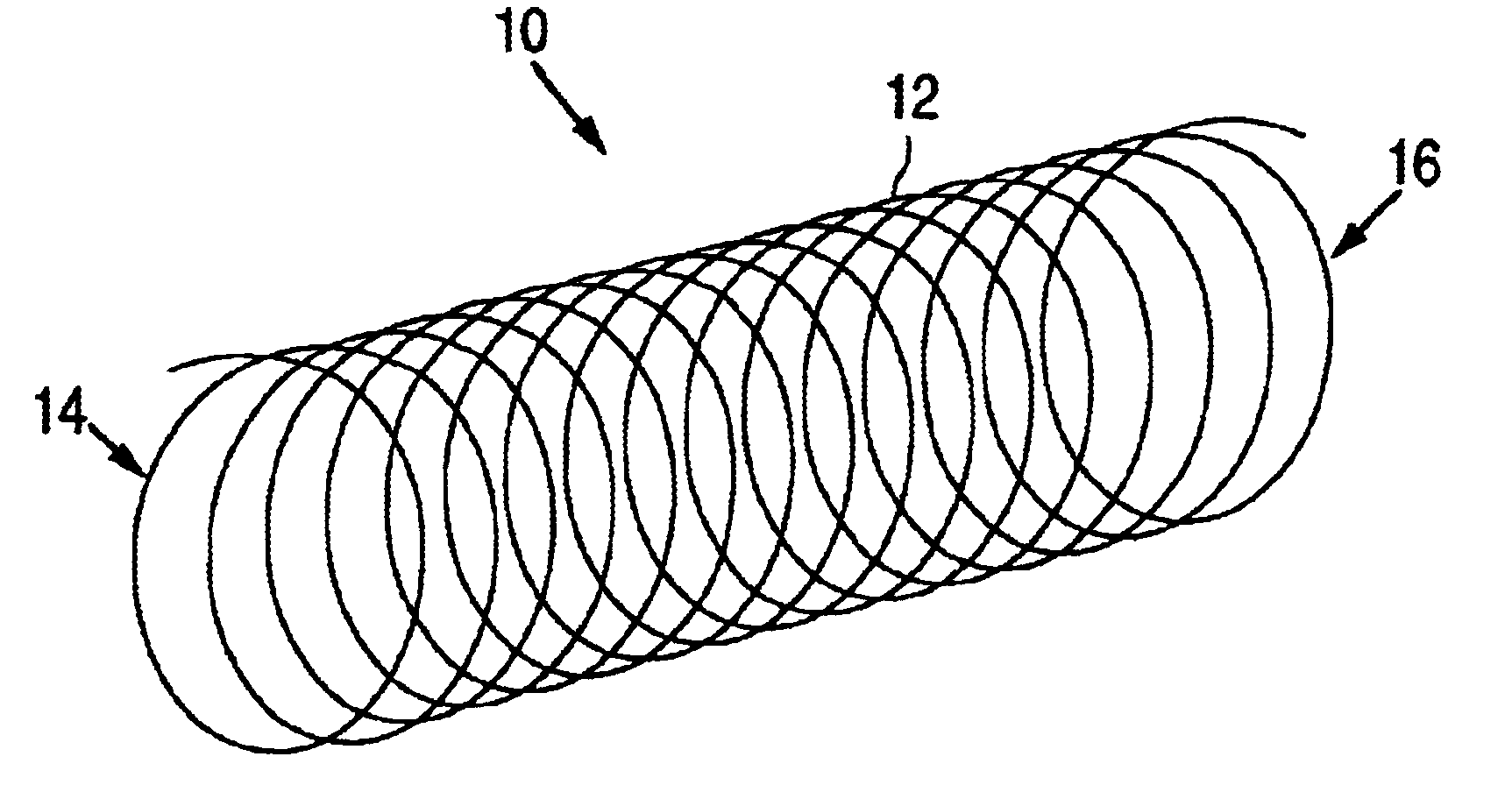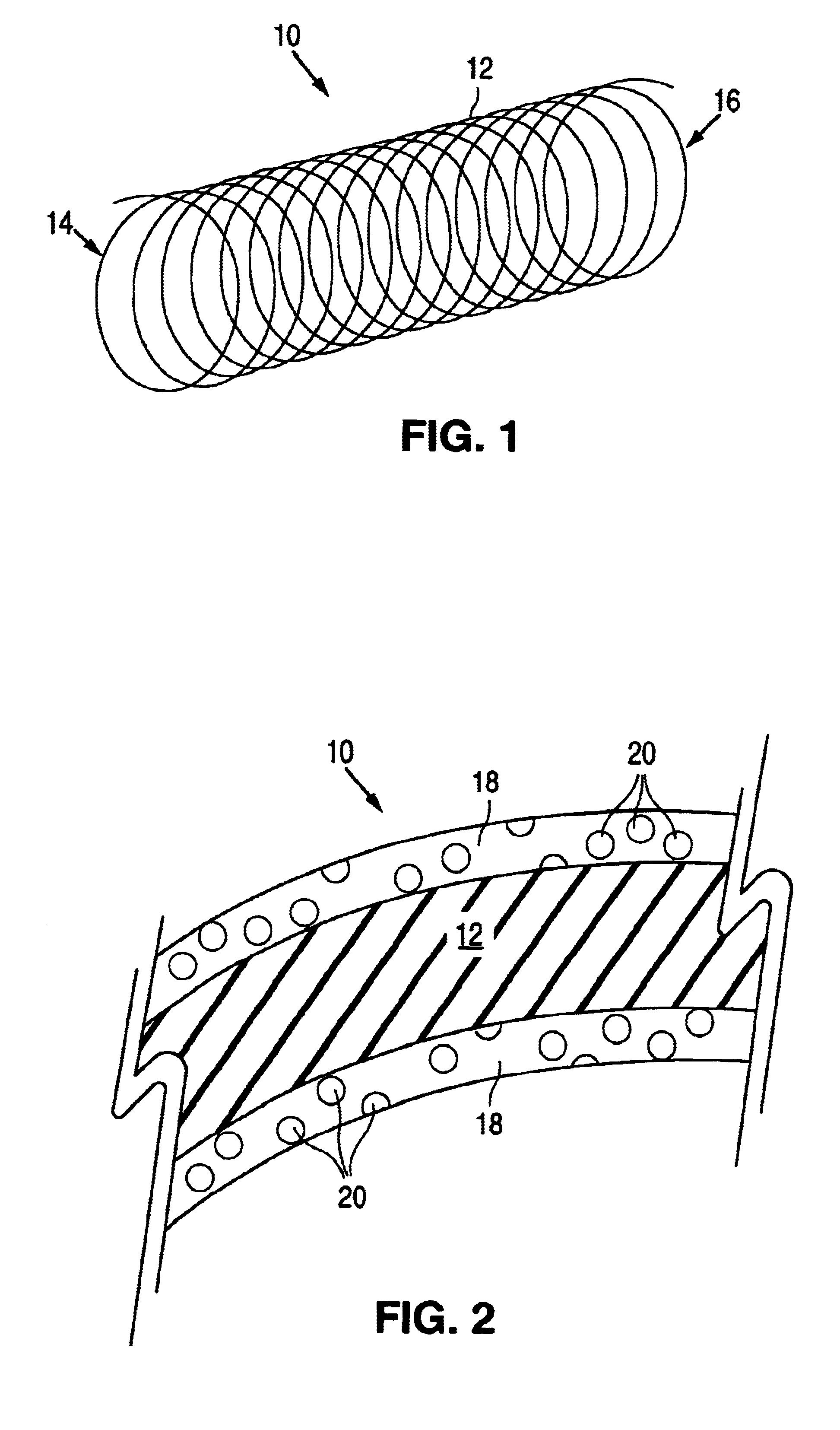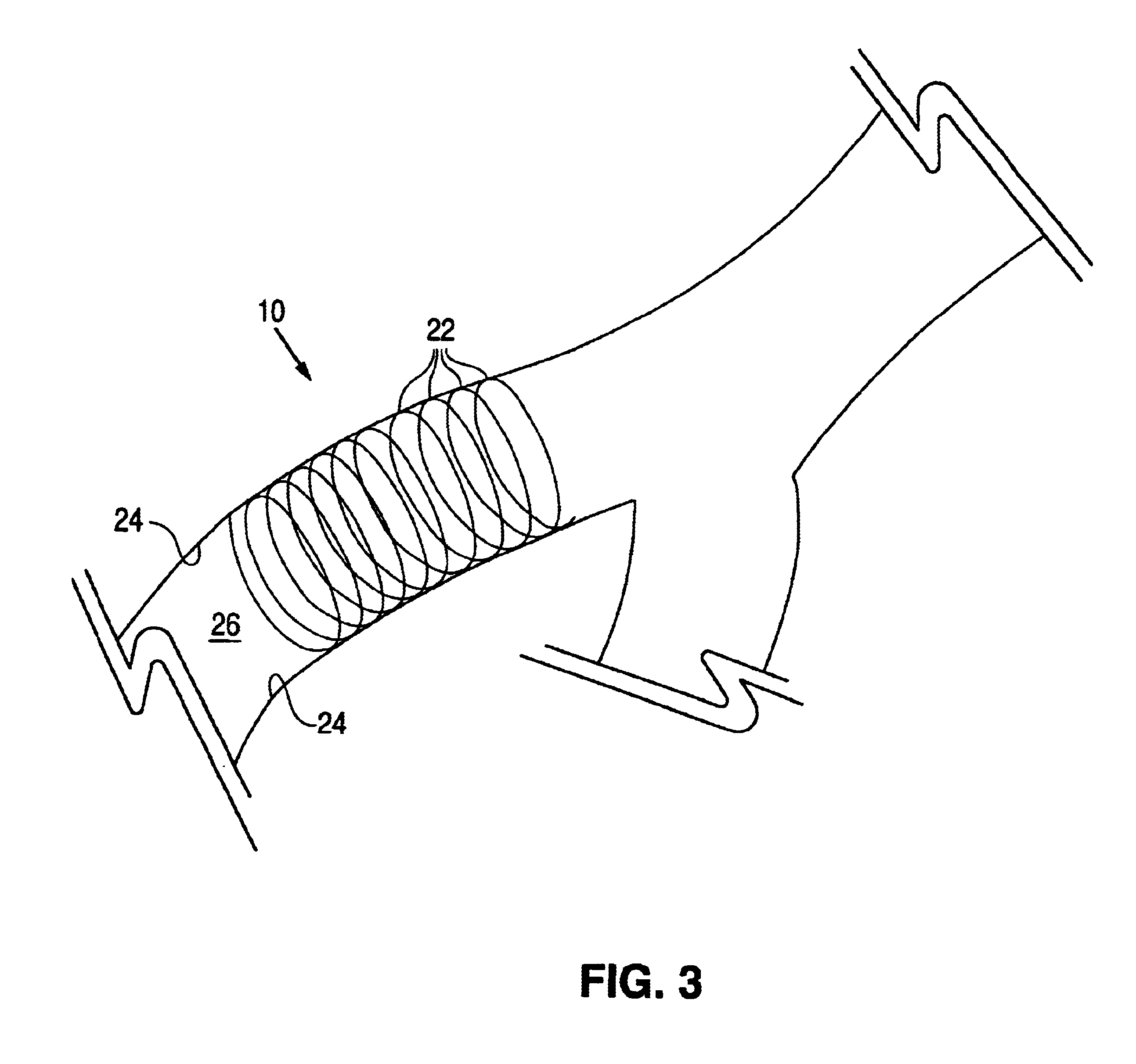Microparticle coated medical device
a technology of microparticles and medical devices, applied in the field of medical devices, can solve the problems of reoccurring constrictions or blockages, affecting the area of the body not needing treatment, and exacerbate the occurrence of restenosis or thrombosis
- Summary
- Abstract
- Description
- Claims
- Application Information
AI Technical Summary
Problems solved by technology
Method used
Image
Examples
example 2
A first solution is formulated using 25% w / w PEGDA dissolved in deionized water. Actinomycin-D (Ac / D) is added at 5% w / w into the first solution, forming a second solution comprising a suspension of Ac / D in the PEGDA solution. A third (curing agent / photoinitiator) solution is formulated using 10% w / w 2,2, dimethoxy 2 phenyl acetophenone solution dissolved in VP monomer. A final solution is formulated by adding 1 mL of the initiator solution per 9 mL of the PEGDA-Ac / D suspension.
The process of fabricating a single microparticle 20 involves adding a drop of the final solution, using a 10 micro-liter pipette, into a viscous mineral oil or silicone oil bath. After adding the drop of solution to the bath, a 360 nm wavelength black ray UV lamp is used to cure the spherical droplet suspended in the bath. This results in a crosslinked, swollen PEGDA particle containing Ac / D. The microparticle 20 is left to settle to the bottom of the vial containing the oil bath. The above process is repeat...
example 3
A first solution is formulated using 25% w / w PEGDA dissolved in deionized water. Ac / D and dexamethasone are each added at 5% w / w into the first solution, forming a second solution comprising a suspension of Ac / D and a solution of dexamethasone in the PEGDA solution. A third (curing agent / photoinitiator) solution is formulated using 10% w / w 2,2, dimethoxy 2 phenyl acetophenone solution dissolved in VP monomer. A final solution is formulated by adding 1 mL of the initiator solution per 9 mL of the PEGDA-Ac / D suspension.
The final solution is added into a viscous mineral oil or silicone oil and vortexed vigorously. After the water-in-oil emulsion is formed, a 360 nm wavelength black ray UV lamp is used to cure the spherical droplets suspended in the bath. This results in crosslinked, swollen PEGDA particles containing Ac / D. The microparticles 20 are left to settle to the bottom of the vial containing the oil bath. The oil phase is then decanted off and the particles 20 are washed in a s...
example 4
A first solution is formulated using 25% w / w VP dissolved in deionized water. PEGDA, having a molecular weight of 1000, is added at 8% w / w into the first solution, together with 5% w / w dexamethasone, forming a second solution comprising a suspension of PEGDA-dexamethasone in the VP solution. A third (curing agent / photoinitiator) solution is formulated using 10% w / w 2,2, dimethoxy 2 phenyl acetophenone solution dissolved in VP monomer. A final solution is formulated by adding 1 mL of the initiator solution per 9 mL of the VP-Dexamethasone suspension.
The process of fabricating a single microparticle 20 involves adding a drop of the final solution, using a 10 micro-liter pipette, into a viscous mineral oil or silicone oil bath. After adding the drop of solution to the bath, a 360 nm wavelength black ray UV lamp is used to cure the spherical droplet suspended in the bath. This results in a crosslinked, swollen VP particle containing Dexamethasone. The microparticle 20 is left to settle ...
PUM
| Property | Measurement | Unit |
|---|---|---|
| Volume | aaaaa | aaaaa |
| Water solubility | aaaaa | aaaaa |
Abstract
Description
Claims
Application Information
 Login to View More
Login to View More - R&D
- Intellectual Property
- Life Sciences
- Materials
- Tech Scout
- Unparalleled Data Quality
- Higher Quality Content
- 60% Fewer Hallucinations
Browse by: Latest US Patents, China's latest patents, Technical Efficacy Thesaurus, Application Domain, Technology Topic, Popular Technical Reports.
© 2025 PatSnap. All rights reserved.Legal|Privacy policy|Modern Slavery Act Transparency Statement|Sitemap|About US| Contact US: help@patsnap.com



